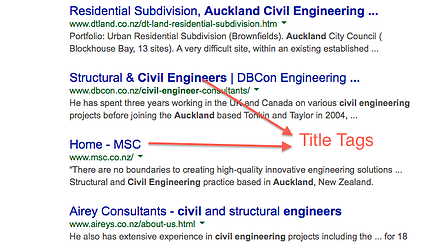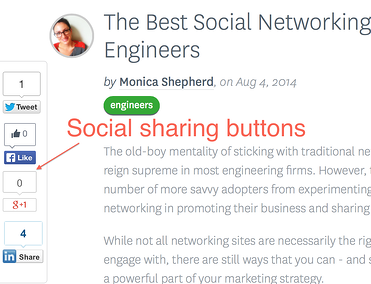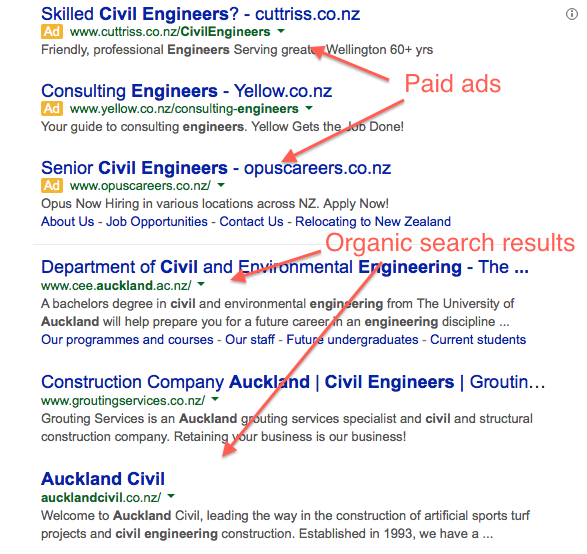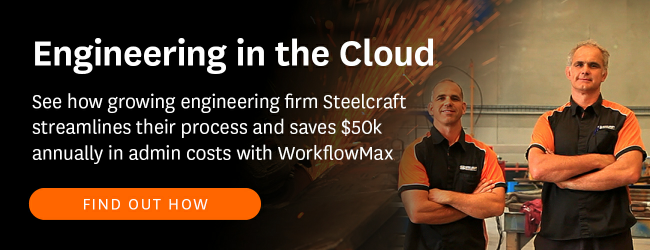Your website looks great, the branding is perfect, you’ve included awesome project shots ... so why aren’t you getting high traffic hits on this masterpiece?
Having a website is not a ‘build-it-and-they-will-come’ situation. So how do you ensure your website is working hard to promote your engineering firm? It’s time to stop throwing big bucks at print advertising as your primary promotion vehicle and invest some time in increasing your visibility online.
Who’s looking at your website?
Marketing your website will be impossible if you don’t know who your target audience is. Before you start, you need to determine who your website is aimed at, what their needs are, what kind of solutions are they looking for, and what location are they in. Your aim is not to reach everyone, but to target your content to reach people who are most likely to engage your services. Remember, this is not limited to just potential clients, but could include others in the industry, media, suppliers and stakeholders.
Once you've established who you're talking to, then you're ready to start targeting your online marketing. Here's our 3-step guide to doing just that:
Step 1. Optimise your website for organic search results

While it may sound technical, the basics of search engine optimisation (SEO) are actually not.
Here are some small adjustments you can make on your site which have the potential to make a big impact on your search engine ranking:
⇒ Know your keywords
The first step is to know what search terms people are using to search for your services. This might be a product or service you supply, or an audience that you’re hoping to target. Also consider the geographical reach of your business to narrow your range. Keep these in mind throughout your site - I’ll explain more below.
You can use handy keyword research tools such as Google’s Adwords Keyword Planner, Google Suggest and Ubersuggest, which will suggest terms for you to use depending on your focus.
⇒ Tell-All Title Tags
Page titles are critical to your SEO, so update these for each of your pages to include your keywords. So many websites simply have the word ‘Home’ or ‘About Us’ on their title bar; this is telling search engines nothing about what your site is about.
Instead, you could put something like ‘[Company Name] Consulting Engineers | Civil Engineering | Auckland’. (However, be careful not to overdo the use of keywords or your website can get penalized for keyword stuffing.) Try to keep these between 50-60 characters long to ensure your titles display properly in search results.

⇒ Get linked
Links are Google superfood. Try to solicit links from credible, quality websites - the higher their traffic, the more it helps you, and the more relevant the better. Remember it’s a matter of give-and-get; provide some outbound links to partners, suppliers or clients you are happy to endorse and it’s more likely you’ll receive some inbound links in return. Start with local online directories - most of these are free (or you can pay for an upgraded account).
Some suggestions for where you could ask for inbound links:
- Industry publications or websites
- Partner sites or businesses who you frequently work alongside
- Social media accounts or online listings
- Businesses using your products or services
- Business associations
- Testimonials
⇒ A matter of meta

Meta descriptions (the description visible in the search results) technically do not affect your SEO, but a good meta description will encourage more click-throughs from search engines. Make sure yours succinctly explain what the page is about, and are compelling enough to encourage readers to click to find out more.
⇒ Make use of headings and subheadings
Not only do headings make it easier on the eye for the reader, but they also give search engines a heads-up that your content includes some important and relevant information.
Include headings on your web pages using heading tags (H1, H2 and H3) - check in with your web designer if you’re unsure about formatting these.
⇒ Optimise images
Optimising images is something that is often overlooked. Search engine crawlers can’t actually ‘see’ your images, so you need to provide them with a relevant description of what the photo portrays instead. It’s an opportunity to use your keywords, but again, don’t go overboard because you’ll trigger the spam alert.
If you’re not sure how SEO-friendly your site is, there are free tools available that will analyse your site’s performance and suggest improvements, such as Hubspot’s Marketing Grader or Open Site Explorer from SEOmoz.
Be weary of telemarketers or email marketers who claim that they’ll have you top of the ranks by the end of the week. Optimising your website is something that should be done using sound SEO principles, not a manipulation of keywords and dodgy links. Your new mantra: SEO is a marathon, not a sprint.
If you want to upskill a little more on SEO, SEOmoz offers a free beginner’s guide to SEO which covers all the essentials.
Step 2. Create Content
Creating compelling, unique content is another essential part of marketing your website. New content signals to search engines that they should be checking out your site regularly, and encourages them to bump you up the search results.
It helps that interesting content is actually appreciated by human readers too, not just search engines. Regularly providing informative content also helps you increase trust and credibility, demonstrate the value of your services and establish your brand as an industry thought leader. Follow the adage of quality over quantity though, and keep your content relevant and engaging. Write for your readers, not for the bots.
Content could include:
- downloadable resources for customers
- blogs and articles
- videos
- trade presentations
- data sheets
- customer case studies
We’ve put together a bit more info about the importance of including valuable technical content on your engineering website, and how you can do it, if you’d like to know more.
Blogs and articles in particular act as link magnets, attracting more leads and boosting your SEO efforts. According to SocialTimes, business to business companies that blog generate 67% more leads than those that don’t. If you don’t know where to start when it comes to writing a blog, we’ve got some more tips here to help you get started.
Once you’ve created content, leverage your efforts using social media, such as LinkedIn and Twitter, to post links to your site. Add share buttons to your website pages to make it as easy as possible for readers to share content that has caught their attention.

Step 3: Pay Per Click (PPC)
Achieving a coveted first-page spot through natural SEO can seem like long slog. Until the search engine crawlers have given your site the recognition it deserves, you may want to complement your efforts with paid advertising, known as pay-per-click (PPC).
These are the listings that appear at the top of search results. You can develop ads to appear when certain search terms are used, and then you only pay when someone clicks on your ad. It is one of the most targeted and measurable ways to invest your marketing spend. Google Adwords will likely be your best channel, and enlisting the help of a PPC specialist is a good idea to help you establish advertising objectives, budgets and strategy.
Four top advantages of PPC include:
- Speed: While you’re still working on organic SEO, PPC can immediately get your site in front of qualified leads.
- Reach: Expanding your visibility will help you reach a wider audience.
- Highly targeted: You can decide where and when your ads appear based on interest, location, languages, as well as other parameters, and send users to specific pages on your site.
- ROI: You only pay when users click on your ads, you can set your own budget and measure results of your campaigns.

Once you’ve created some awesome, shareable content and made your site super easy to find through optimisation it shouldn’t be long before you start to see your site rankings climb, a boost in your traffic and ultimately an increase in leads. Your website is now working round the clock to promote your business to an engaged audience - that’s a pretty powerful advantage over print advertising.
What methods have you implemented to promote your company website? Do you have an on-going SEO strategy in your firm?







